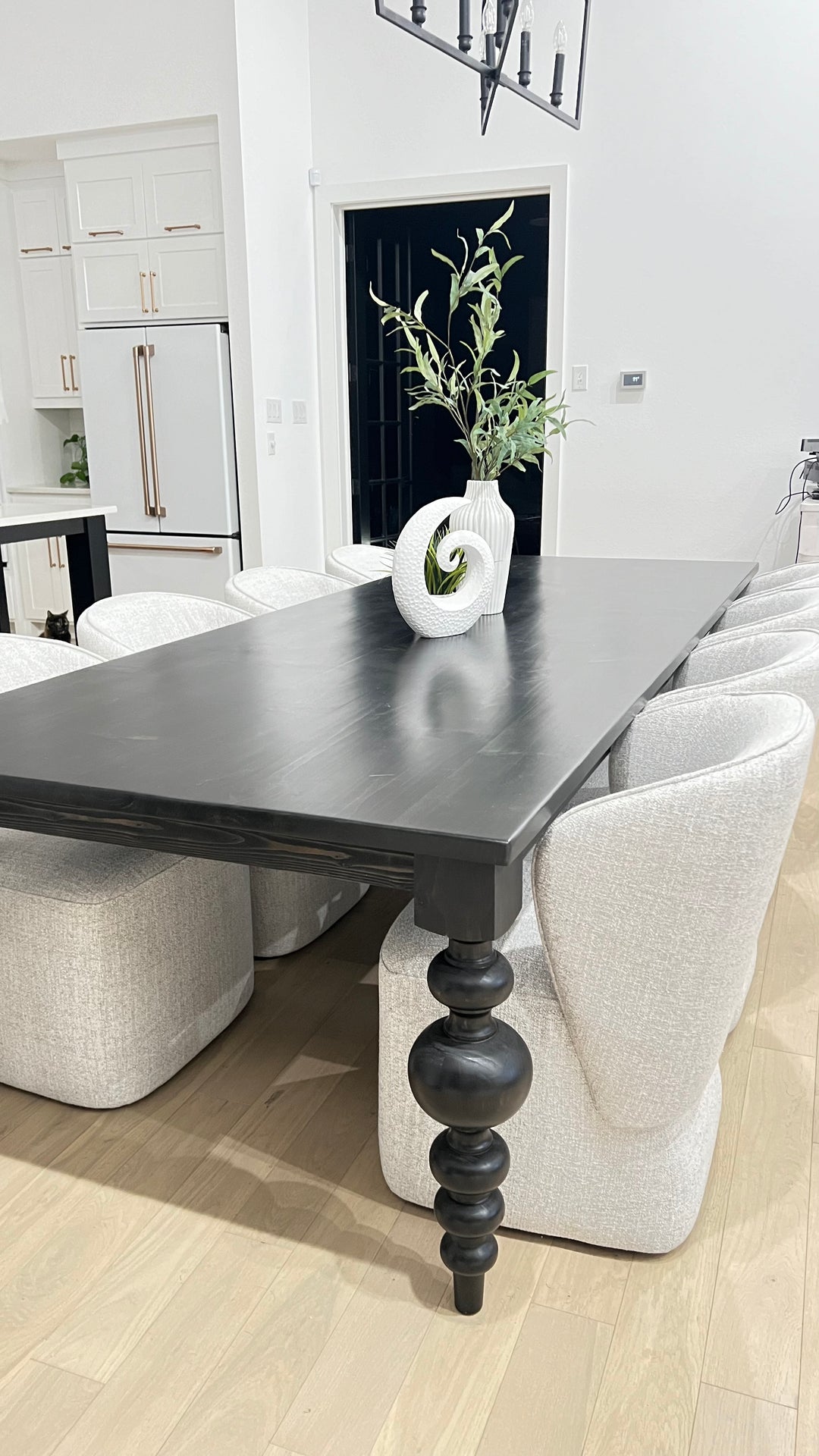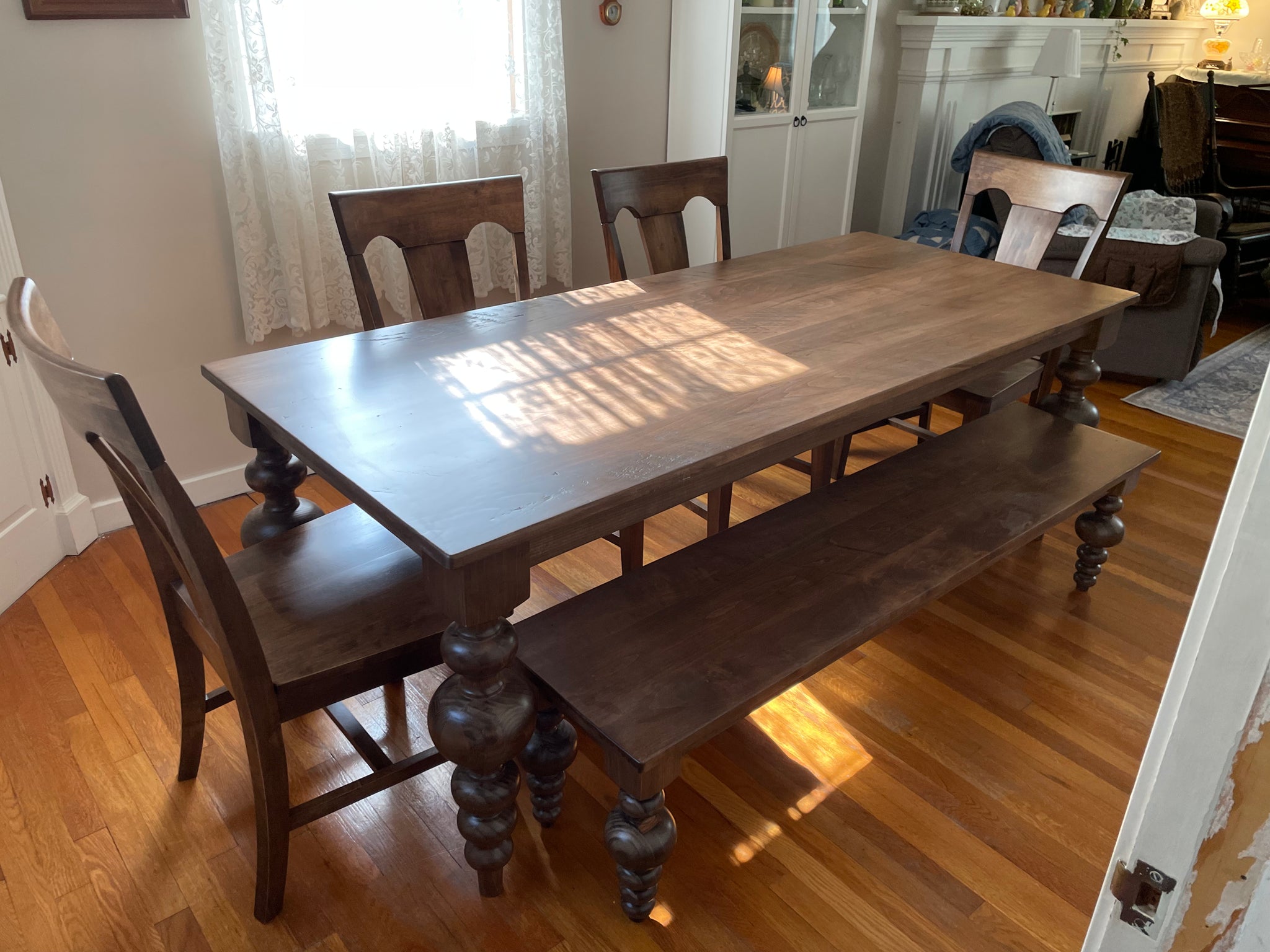Why Custom Dining Room Table Legs Are Worth the Investment
Why Custom Dining Room Table Legs Are Worth the Investment
Blog Article
From Typical to Modern: Discover the Perfect Eating Area Table Legs for Your Design
While classic designs such as cabriole and transformed legs stimulate a sense of timeless refinement, contemporary styles like hairpin and geometric alternatives present a possibility for striking aesthetic passion. As you take into consideration these elements, the inquiry continues to be: how can you flawlessly integrate these diverse leg designs to develop an unified eating experience?
Comprehending Table Leg Styles
The selection of eating space table leg styles can significantly influence both the aesthetic appeals and capability of the room. Each leg style contributes unique useful features and visual elements, accommodating diverse style preferences and usage requirements. Recognizing these styles is essential for selecting the right table that aligns with your overall interior design vision.
For circumstances, conical legs provide a tidy, classic appearance that can enhance an area's style, while stand bases offer stability and optimize legroom, making them excellent for smaller sized areas. Hairpin legs, a characteristic of mid-century contemporary style, introduce a commercial flair, enabling for a ventilated, open feeling. Likewise, trestle legs evoke rustic beauty, giving robust support and a sense of timelessness.
In addition, the selection of products plays a significant duty. Wooden legs can bring heat and structure, whereas metal alternatives commonly convey a streamlined, contemporary vibe. Inevitably, comprehending table leg designs is vital for creating a natural dining location that reflects individual design while making certain functionality and convenience. By thoughtfully taking into consideration these elements, you can enhance both the useful and aesthetic appeal of your eating area.
Conventional Table Leg Options
When picking dining-room table legs, typical options typically personify ageless elegance and craftsmanship. These styles mirror an abundant heritage and a commitment to quality, making them optimal for those that value timeless visual appeals.
Among the most famous typical leg designs is the cabriole leg, identified by its graceful rounded form. This style usually includes ornamental makings and is most commonly found in Queen Anne and Chippendale furniture. Another popular choice is the transformed leg, which flaunts a collection of smooth, rounded forms that give a classic look while maintaining security.
In addition, the straight leg, while basic, offers a strong and unadorned structure that can blend perfectly with a selection of tabletop designs. For those drawn to ornate detailing, claw-and-ball feet legs stimulate a feeling of majesty and can offer as a spectacular centerpiece in any type of dining room.
Lastly, stand bases, although not purely legs, give an alternate traditional alternative that permits adequate legroom and can be wonderfully carved. Each of these conventional leg designs adds to the total ambiance of a dining-room, marrying feature with visual appeal.

Modern Table Leg Styles
Modern table leg layouts use a varied series of designs that highlight cutting-edge products and clean lines. These designs typically prioritize performance while functioning as striking centerpieces within an eating space. Minimalist looks prevail, with legs crafted from materials such as steel, glass, and engineered timber, which add to a ventilated and modern feeling.
One preferred style is the barrette leg, characterized by its slender, conical structure that gives security without overwhelming the tabletop (dining room table legs). This style is typically found in mid-century contemporary furniture and can effortlessly enhance numerous dining table shapes. An additional my website trend is using geometric forms, where legs may tackle asymmetrical or angular types, including visual passion and a touch of virtuosity

Mixing Designs for Unique Areas
Typically, homeowners seek to create distinct dining spaces that show their personal design by blending different style elements. This approach enables the incorporation of varied looks, causing a harmonious yet unique environment. For example, pairing a rustic wood table with streamlined, contemporary steel legs can produce More Bonuses an attractive comparison that boosts the space's total charm.
In addition, integrating vintage table legs with contemporary tabletops can stimulate a feeling of history while preserving a contemporary perceptiveness. Such mixes not just showcase private preference yet likewise motivate imagination, enabling house owners to curate an area that feels both individual and inviting.
Color plays an important role in this blending process; picking table legs that enhance or contrast with the existing color design can improve aesthetic rate of interest. For instance, whitewashed legs can soften the daring of a dark table surface, producing a well balanced visual.
Tips for Picking the Right Legs
Selecting the right table legs is necessary for achieving both performance and visual appeal in your dining area. Begin by taking into consideration the total design of your space. Traditional settings benefit from legs that feature complex carvings you can try these out or transformed styles, while contemporary spaces might require streamlined, minimal styles.
Following, analyze the height and security of the legs. dining room table legs. Basic table range between 28 to 30 inches in elevation, so make sure the legs complement this measurement for comfort. Furthermore, robust materials, such as wood or steel, can improve security and durability
Examine the leg shape as well-- options consist of right, tapered, or stand styles. Straight legs provide a classic appearance, while conical legs can include a touch of sophistication. Pedestal bases give ample legroom and are ideal for smaller sized rooms.
Conclusion
In recap, selecting the ideal eating room table legs calls for cautious consideration of both traditional and modern-day designs. By balancing leg design, height, and product with the general decor, a cohesive and inviting atmosphere can be achieved.
The selection of dining room table leg styles can substantially affect both the appearances and capability of the area. Eventually, recognizing table leg designs is vital for creating a natural eating location that mirrors personal design while ensuring usefulness and comfort.One of the most famous conventional leg designs is the cabriole leg, identified by its stylish bent shape. Straight legs supply a traditional look, while conical legs can add a touch of elegance.In summary, choosing the excellent dining area table legs calls for cautious factor to consider of both modern and standard designs.
Report this page